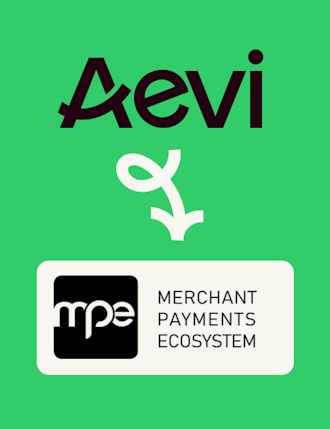Here at Aevi, we’ve been in the in-person payments game for a while, and over the years we’ve worked with a lot of partners and their merchants and come to understand the challenges that they face. One of the biggest challenges our partners encounter is persuading their merchants to move on from inflexible payment systems.
What do we mean? Well there are two types of payment system that are problematic here:
Legacy payment systems- These are systems that merchants have grown used to and continue to use even though since deployment significantly newer and better technology has entered the market.
New payment systems built in a similar way - These are new systems, typically smart systems based on Android, but that have the same issues as legacy systems when it comes to flexibility. These systems are very problematic because they restrict integrations, make it difficult to upgrade payment hardware, upgrade or switch software and connect with a variety or different providers.
Why do merchants use these systems? Well, in the case of legacy systems, it’s simply that merchants feel comfortable with the technology. Merchants are busy people, running their store or restaurant and don’t want to use some of their time implementing and learning how to operate a new payment technology. They also might be worried about the compatibility of this new technology with their other system and processes that they have in place. When they think about changing their payment system to a more modern option, they decide that it simply isn’t worth the time and effort.
In the case of opting for a modern system with limited flexibility, it’s often because the provider is well known in the market. These providers often oblige merchants to agree to long contracts and ensure that additional services can only be purchased from them. These providers are effective at locking merchants in and making it difficult for them to work with other providers.
What this means is that in the long run, the merchant is stuck with a system that is clunky to use for them, integrates poorly with the wider payment ecosystem, and means they miss many of the things that modern or more flexible payment technologies offer them. Even worse than this, it leads to them offering a poor experience to their customers, who at best might notice a clunky and slow payment experience and at worst can’t use their preferred payment method.
Limited Functionality
Probably the biggest single shortcoming of many inflexible systems is the lack of functionality that they offer merchants. This rigidity means that the system can’t integrate with the merchants’ other systems, for example stock control or customer loyalty technology.
Some merchants have found a workaround for this by using apps from third party developers but this approach is problematic. First, these apps can be very costly, putting additional financial strain on merchants who may already be operating in tough market conditions or trying to scale up a small business where every penny counts. Second, an even bigger risk stems from the fact that some of these systems don’t offer support for third party applications, so if merchants want to add functionality or integrations into their system this way they have to liaise directly with app developers. Smaller app development companies can have poor customer experience or in the very worst cases simply not respond to merchants at all, leaving merchants completely stranded and with payment devices not working correctly.
An Inflexible Option
Another key issue for merchants trapped by these systems is the lack of flexibility around payment processors. Merchants find themselves locked into a particular processor, unable to use their payment hardware with an alternate provider. This means that if a processor increases their fees, offers poor customer service, or won’t offer functionality that the merchant requires they are stuck with them.
Long Contracts and Tricky Pricing
As noted above, one of the hallmarks of these payment technologies is that they often lock merchants into long contracts that they can’t find a way out of, stopping merchants moving to a solution that they know will be easier to use, easier to integrate with other parts of their payment ecosystem, and more cost effective.
Some system providers have opaque pricing models that leave merchants in the dark about exactly how much they’ll be paying for services. This makes it harder for them to plan and therefore scale their business, and in the worst case scenario could lead to financial difficulties.
What’s The Solution?
Payment Service Providers and Independent Sales Organisations can help merchants improve the way they work by highlighting the benefits of flexible payment platforms. These benefits include allowing their customers to pay easily, no matter what their payment method of choice enabling the merchant to provide a better customer experience, easy integration with third party apps allowing merchants to bolt on functionality and, a transparent pricing structure that allows them to scale without worrying about hidden costs.
Where merchants are wedded to traditional hardware, let them know that there are options like Aevi’s Payment Plus solution which offers the functionality of a Smart POS device but can be easily swapped out for a classic payment terminal, or a payment terminal from a provider who simply offer limited functionality.
Whilst some merchants might be reluctant to move away from devices and a platform that they feel they know and are used to working with, it’s important that they understand the benefits to be gained from moving away from legacy systems and also for them to know that when they’re ready to make the move, they’ll be supported by you as a service provider and a capable, flexible and future focussed payment technology stack.










